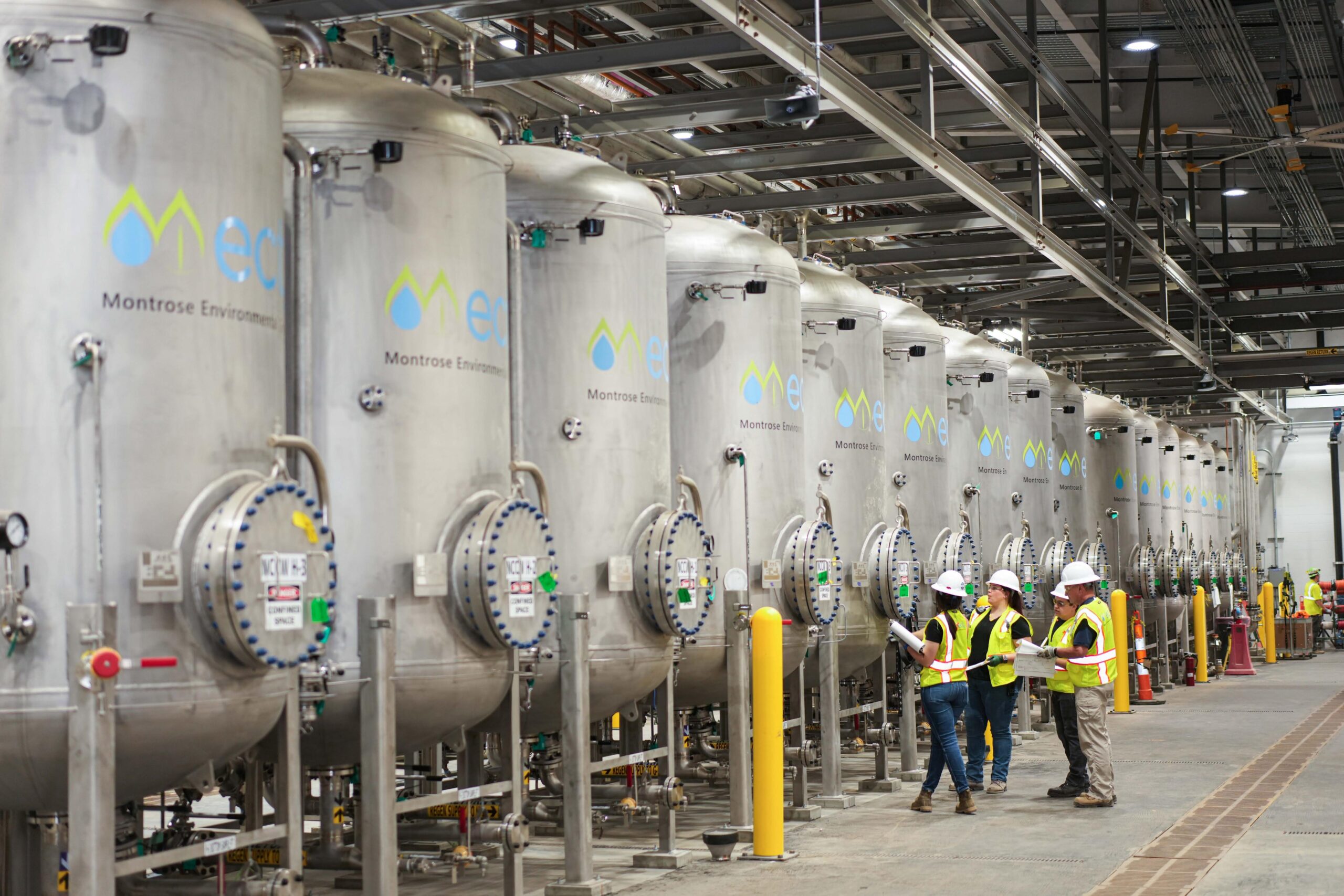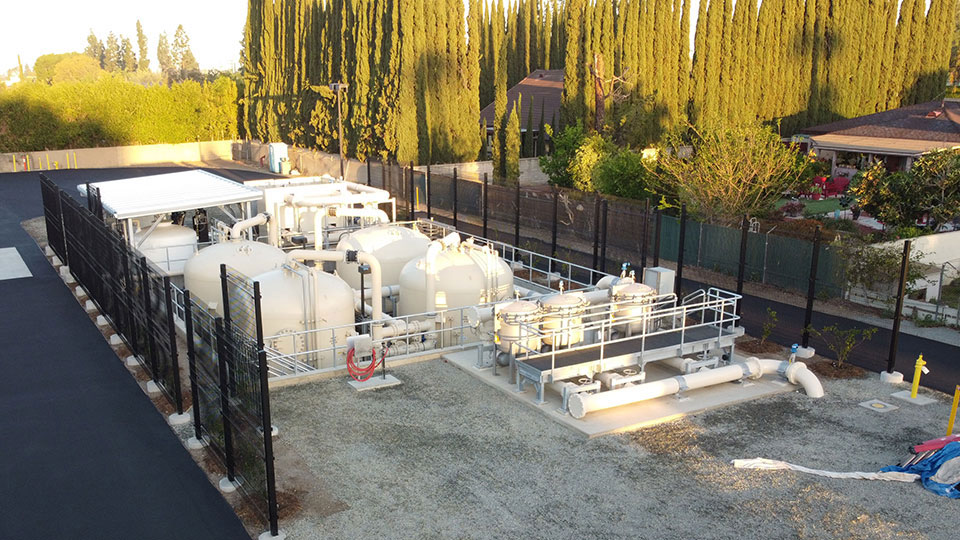Cutting-edge PFAS Treatment Solutions for Safer Water
The increasing prevalence of PFAS contamination in water materials necessitates an important evaluation of cutting-edge treatment services. Advanced purification technologies and novel chemical therapies present appealing methods for lowering these persistent toxins. Additionally, emerging bioremediation techniques provide an even more sustainable technique to taking on PFAS difficulties. As regulative structures continue to adapt, understanding the effectiveness and scalability of these options becomes extremely important. What effects do these innovations hold for public wellness and environmental remediation, and exactly how can stakeholders effectively implement them in diverse contexts?
Overview of PFAS Contamination
PFAS contamination has emerged as a substantial environmental and public wellness concern. Per- and polyfluoroalkyl materials (PFAS) are a team of synthetic chemicals understood for their determination in the environment and body, leading them to be generally referred to as "permanently chemicals." These compounds have actually been extensively utilized in various industries, including firefighting foams, water-repellent textiles, and food product packaging, mostly as a result of their water- and grease-resistant properties.
The prevalent usage of PFAS has actually caused their detection in soil, water supplies, and also in the blood of human beings and pets. Studies have actually connected PFAS exposure to numerous wellness issues, including developmental impacts in infants, immune system disorder, and different forms of cancer cells. Additionally, the environmental determination of these compounds complicates their deterioration and removal, elevating problems about long-term ecological impacts.
Regulatory bodies are significantly applying stringent standards to keep an eye on and reduce PFAS degrees in alcohol consumption water and other ecological mediums. As awareness of PFAS contamination grows, it has ended up being necessary for communities and sectors to seek effective treatment options to alleviate exposure and safeguard public health.
Advanced Filtering Technologies
As the urgency to deal with PFAS contamination intensifies, advanced filtering modern technologies have actually emerged as a critical part in the remediation initiatives intended at getting rid of these persistent chemicals from water sources. These innovations take advantage of advanced devices to successfully target and capture PFAS compounds, which are infamously resistant to traditional therapy methods.
One of one of the most promising methods is the usage of granular turned on carbon (GAC), which adsorbs PFAS molecules as a result of its high surface location and permeable framework. This method has been extensively carried out in both local and commercial settings, showing substantial decreases in PFAS concentrations. In addition, ion exchange materials have gained traction, particularly designed to precisely bind PFAS ions from water, therefore facilitating their removal.
Membrane filtration technologies, such as reverse osmosis and nanofiltration, likewise show effectiveness in PFAS elimination by physically separating impurities from water - pfas management. These systems can attain high levels of purity, making them appropriate for alcohol consumption water applications
Chemical Treatment Advancements
Many chemical therapy advancements are being explored to efficiently attend to PFAS contamination in water supplies. One promising strategy entails using innovative oxidation procedures (AOPs), which make use of effective oxidants such as ozone, hydrogen peroxide, or chlorine dioxide incorporated with UV light to break down PFAS substances into much less dangerous substances. This technique has shown efficiency in lab settings, revealing potential for scalability in real-world applications.
One more cutting-edge strategy is the development of ion-exchange materials specifically made to target PFAS. These resins can precisely adsorb PFAS why not find out more compounds from water, enabling their removal throughout therapy procedures. Current developments have actually enhanced the performance and capability of these materials, making them a beneficial option for water treatment facilities.
Additionally, scientists are examining using chemical agents like persulfate and ferrous ions to boost the destruction of PFAS in infected water. These agents can generate chemical reactions that help with the malfunction of relentless PFAS substances.
Emerging Bioremediation Strategies
Current innovations in chemical therapy developments have paved the method for checking out bioremediation techniques as a viable option for attending to PFAS contamination. Bioremediation utilizes the natural metabolic processes of microbes to weaken or change contaminants, making it an enticing method for dealing with relentless contaminants like PFAS.
Emerging techniques in bioremediation include making use of genetically crafted bacteria that can particularly target and break down PFAS compounds. These microbial strains are being created for their improved degradation capabilities, increasing the performance of the removal process. Additionally, researchers are examining the possibility of plant-assisted bioremediation, where particular plant types may uptake and withdraw PFAS from polluted soil and water.
One more encouraging technique is the application of bioaugmentation, which entails introducing useful bacteria into polluted environments to improve the degradation of PFAS. This approach can help with quicker remediation timelines and enhance total effectiveness.

Governing Structures and Requirements
A comprehensive regulative framework is necessary for successfully handling PFAS contamination and ensuring public health and wellness protection. The increasing acknowledgment of per- and polyfluoroalkyl substances (PFAS) as toxic wastes has actually prompted numerous government and state firms to develop requirements that regulate their presence in water materials. The United State Environmental Protection Agency (EPA) has established health advisories and is working towards establishing enforceable restrictions for PFAS in alcohol consumption water.
State-level policies differ considerably, with some states adopting more stringent guidelines than those proposed by the EPA. These laws often consist of maximum contaminant degrees (MCLs) for specific PFAS compounds, monitoring needs, and reporting obligations for try this web-site water utilities. Additionally, arising frameworks focus on the removal of contaminated sites, stressing the demand for reliable treatment innovations.

Verdict
In final thought, the growth and execution of ingenious PFAS treatment services are crucial for attending to the pervasive concern of water contamination. Advanced purification technologies, chemical therapies, and emerging bioremediation techniques collectively offer a diverse strategy to successfully minimize and weaken PFAS levels. As regulative structures proceed to advance, integrating these innovations will be important to secure public health and wellness and restore the honesty of contaminated water sources, ultimately adding to a cleaner and safer atmosphere.